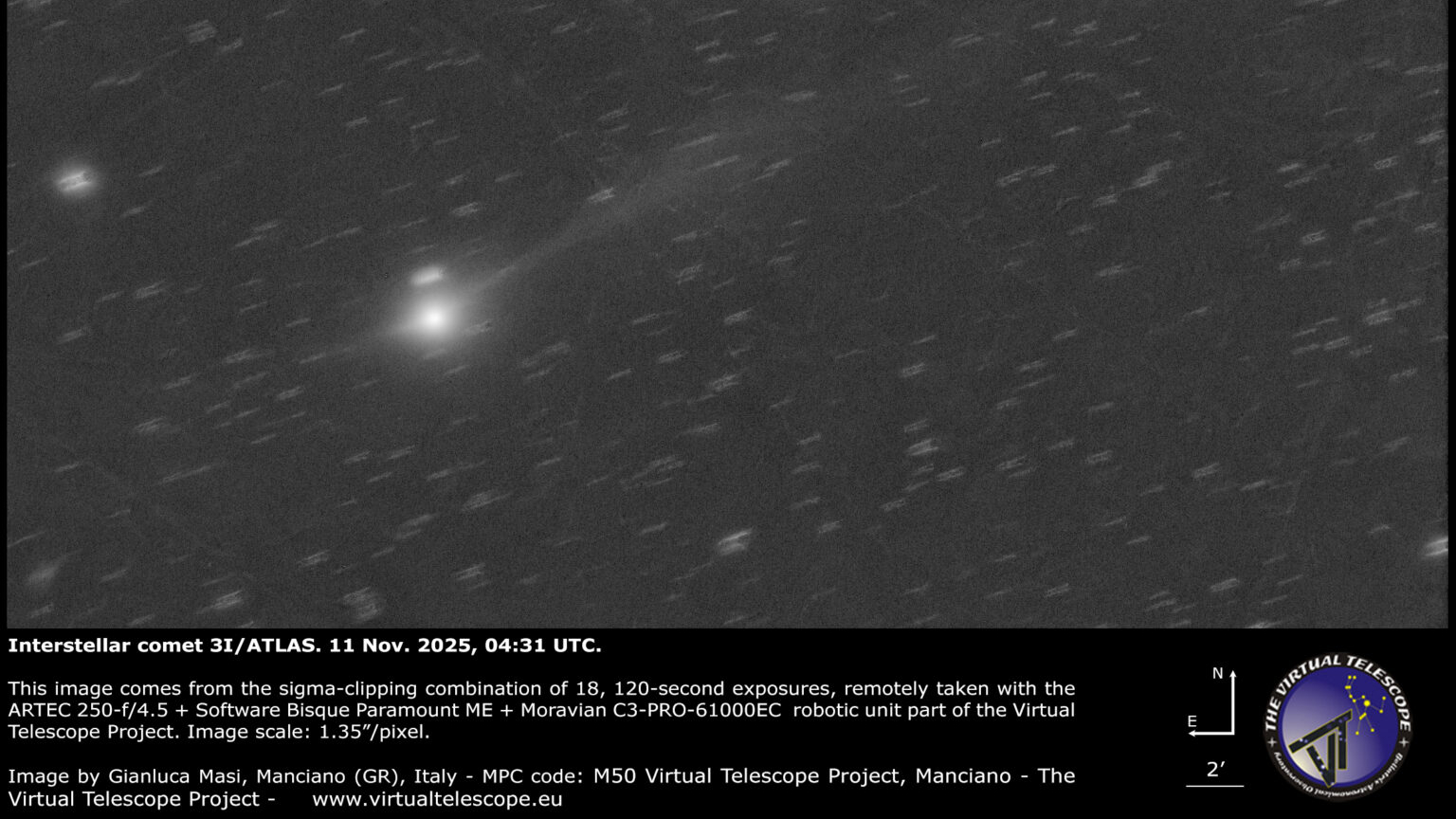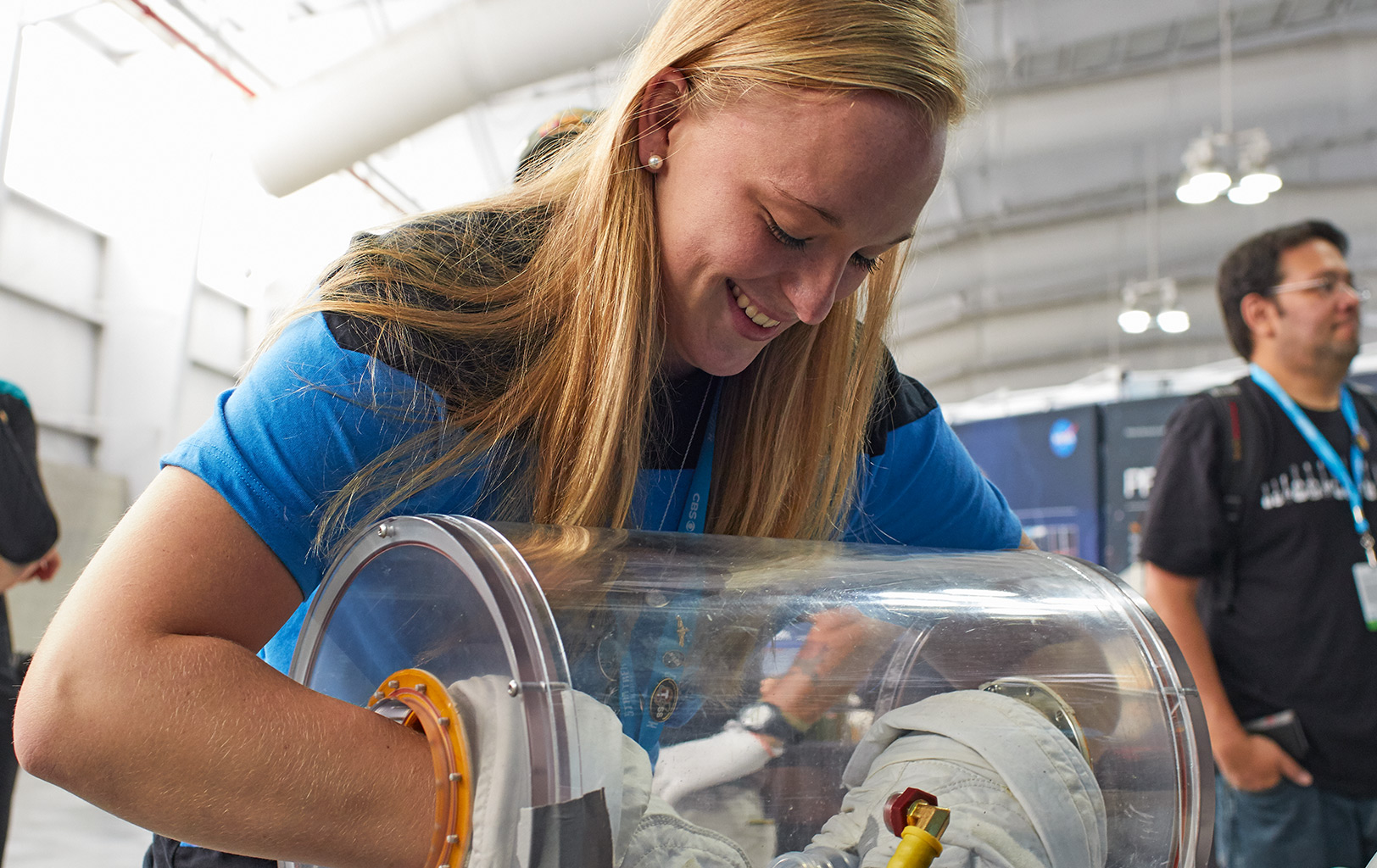Interstellar comet 3I/ATLAS's tail is still growing, new image shows
Interstellar comet 3I/ATLAS exhibits a bright, extended ion tail while releasing gas and dust as it travels through the inner solar system.

A stunning new image of interstellar comet 3I/ATLAS (C/2025 N1 ATLAS) reveals the cosmic visitor's ion tail has grown dramatically longer and more structured — a sign of intensifying activity as it continues its journey through the inner solar system.
The image, captured by the Virtual Telescope Project at 11:31 p.m. EDT on Nov. 10 (0431 GMT on Nov. 11), is composed of 18 separate 120-second exposures, remotely taken by robotic telescopes located in Manciano, Italy. Despite the comet being just 14 degrees above the eastern horizon and a bright 61% moon shining about 70 degrees away, a sharply defined, luminous ion tail is seen.
"Exploiting the unusual good weather of this season, we imaged the interstellar comet 3I/ATLAS (C/2025 N1 ATLAS) again, recording a much more developed ion tail," Gianluca Masi, Virtual Telescope Project founder and astronomer, said in a post sharing the new image. "Looking at the picture, we see how the ion tail of 3I/ATLAS is clearly showing better and better."
An ion tail forms when the sun's ultraviolet radiation strips electrons from gas molecules released by the comet, turning them into charged ions. These ions are then swept away by the solar wind — a constant stream of charged particles flowing outward from the sun — creating a long, often bluish tail that always points directly away from the sun regardless of the comet's direction of travel. This tail differs from the dust tail, which tends to appear yellowish-white and curves gently along the comet's orbital path.
In the new image, the comet's bright core is surrounded by a compact coma and a sharply defined ion tail stretching roughly 0.7 degrees across the sky. A faint anti-tail — a feature caused by the observer's perspective as dust trails along the comet's orbit — can also be seen extending in the opposite direction. The image shows a clear increase in activity compared to earlier observations, suggesting that 3I/ATLAS is venting gas and dust more vigorously as it reacts to solar heating.
3I/ATLAS is only the third confirmed interstellar object ever detected, following 1I/'Oumuamua in 2017 and 2I/Borisov in 2019. Unlike its predecessors, this visitor from another star system is bright enough to be studied in detail by ground-based telescopes, offering astronomers a rare opportunity to observe how an interstellar comet behaves under the influence of our sun.
The growing length and brightness of the tail suggest increasing sublimation of volatile materials — likely including carbon dioxide and dust — that are then swept into space by the solar wind. Early data suggest that 3I/ATLAS may contain a high fraction of carbon dioxide ice, offering potential clues to the conditions in the distant planetary system where it formed, as well as valuable insight on how comets evolve beyond our solar neighborhood.
Breaking space news, the latest updates on rocket launches, skywatching events and more!
The Virtual Telescope Project will continue to monitor 3I/ATLAS as it travels through the inner solar system. You can check out past images of the comet taken since it was first detected in July of this year.

Samantha Mathewson joined Space.com as an intern in the summer of 2016. She received a B.A. in Journalism and Environmental Science at the University of New Haven, in Connecticut. Previously, her work has been published in Nature World News. When not writing or reading about science, Samantha enjoys traveling to new places and taking photos! You can follow her on Twitter @Sam_Ashley13.
You must confirm your public display name before commenting
Please logout and then login again, you will then be prompted to enter your display name.